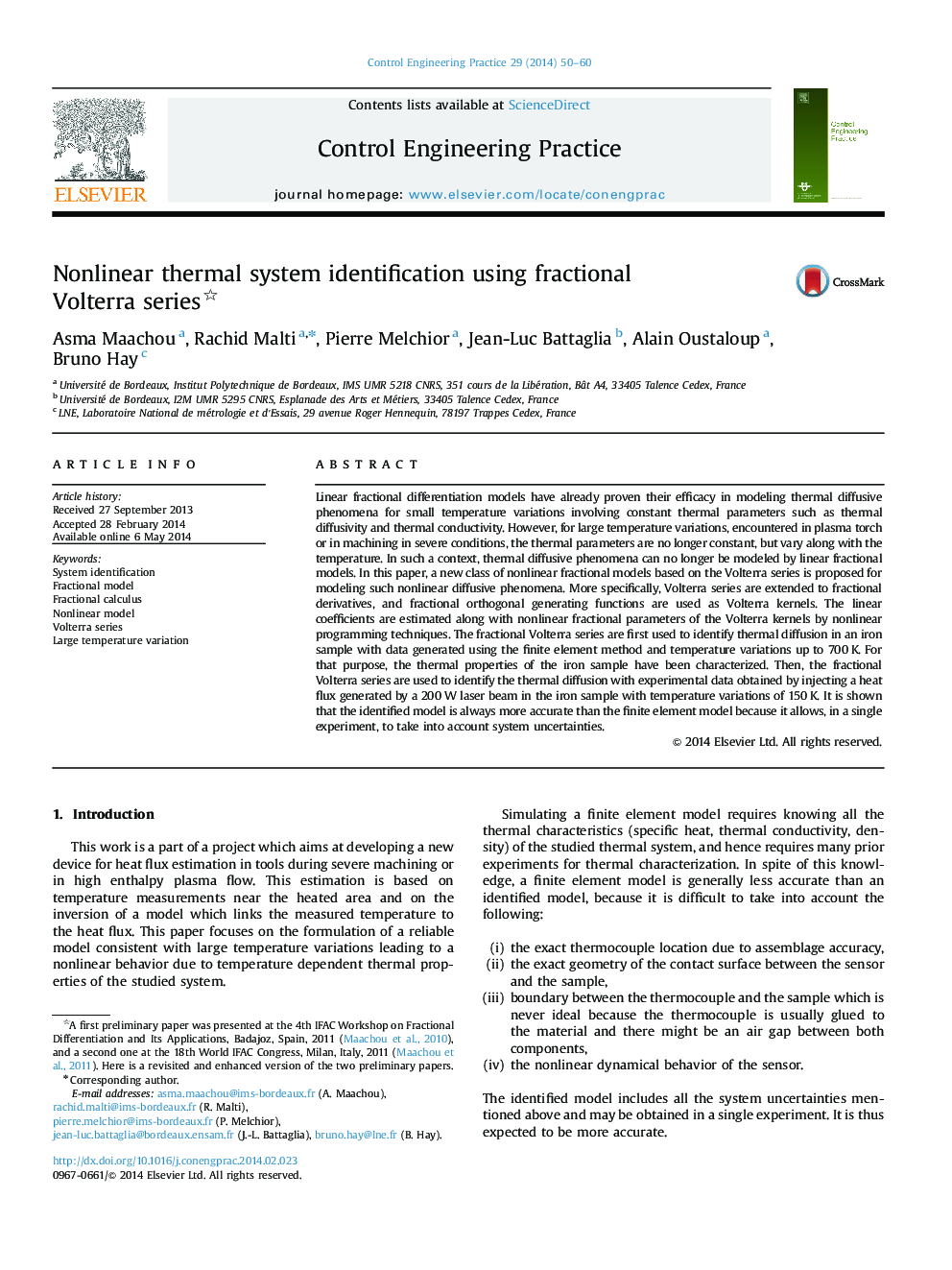| کد مقاله | کد نشریه | سال انتشار | مقاله انگلیسی | نسخه تمام متن |
|---|---|---|---|---|
| 699325 | 1460717 | 2014 | 11 صفحه PDF | دانلود رایگان |
• The new class of non-linear fractional models is proposed for system identification.
• Volterra series are extended to fractional models.
• An application is provided in modeling of thermal systems for large temperature variations.
Linear fractional differentiation models have already proven their efficacy in modeling thermal diffusive phenomena for small temperature variations involving constant thermal parameters such as thermal diffusivity and thermal conductivity. However, for large temperature variations, encountered in plasma torch or in machining in severe conditions, the thermal parameters are no longer constant, but vary along with the temperature. In such a context, thermal diffusive phenomena can no longer be modeled by linear fractional models. In this paper, a new class of nonlinear fractional models based on the Volterra series is proposed for modeling such nonlinear diffusive phenomena. More specifically, Volterra series are extended to fractional derivatives, and fractional orthogonal generating functions are used as Volterra kernels. The linear coefficients are estimated along with nonlinear fractional parameters of the Volterra kernels by nonlinear programming techniques. The fractional Volterra series are first used to identify thermal diffusion in an iron sample with data generated using the finite element method and temperature variations up to 700 K. For that purpose, the thermal properties of the iron sample have been characterized. Then, the fractional Volterra series are used to identify the thermal diffusion with experimental data obtained by injecting a heat flux generated by a 200 W laser beam in the iron sample with temperature variations of 150 K. It is shown that the identified model is always more accurate than the finite element model because it allows, in a single experiment, to take into account system uncertainties.
Journal: Control Engineering Practice - Volume 29, August 2014, Pages 50–60
